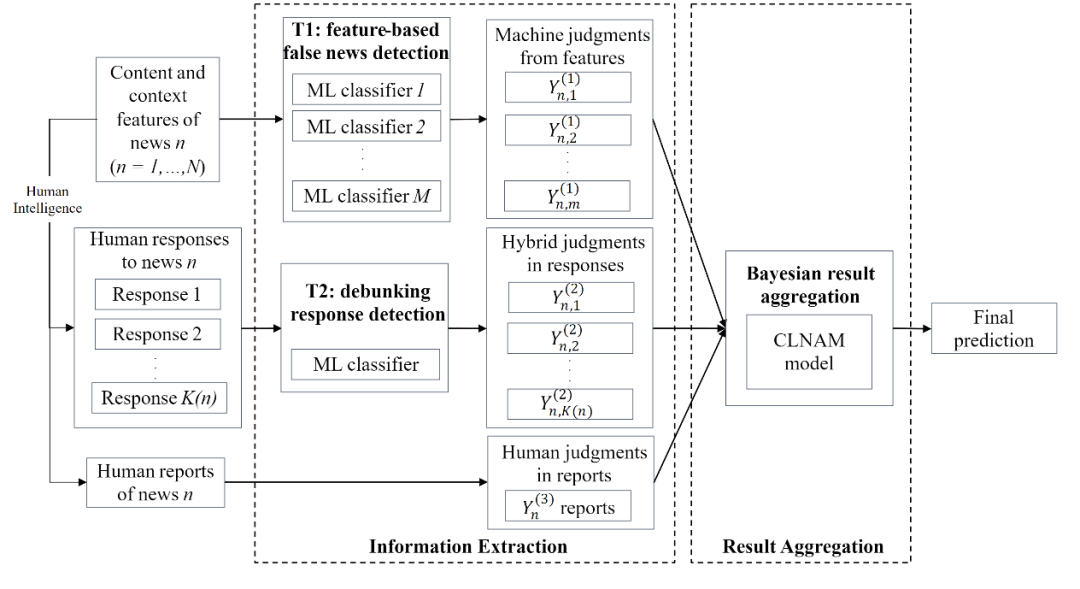Social pain point issue: ubiquitous false news
In recent years, along with the COVID-19, there is also the information epidemic (Infodemic), that is, the proliferation of false news on social media makes it difficult for people to determine reliable information sources, which has brought serious impact on global public security. Under the dual catalysis of the rapid development of the internet and the rise of social platforms, fake news is becoming increasingly fierce. Any major event at home and abroad is accompanied by the fermentation of a large number of false news, such as the COVID-19 epidemic, Malaysia Airlines MH370, the US election, etc. In this context, how can we effectively contain the information epidemic by detecting false news through technological means?
Identifying false news has important practical significance: taking the epidemic in Shanghai last year as an example, mainstream platforms such as Weibo, WeChat, and Zhihu are filled with various rumors and false information. People living in Shanghai are unable to access real information, including material procurement and medical information closely related to life, while people outside Shanghai are also unable to understand the real situation, which has caused social panic and a lack of media credibility. So, we need to design a reasonable identification mechanism to review a news item before it enters the public eye, filter out fake news, and also let the public know the true situation.
Explore human intelligence and organically combine human-machine intelligence
For a fake news on social media, users are actually contributing their wisdom in real-time by expressing their attitude towards the news. As shown in the Weibo on the left side of the picture, a few users will directly report it, and if you browse its comments, you will find that many users will also directly or indirectly refute rumors in the comments. So, can we use the power of the group to solve the problem of false news generated by the group itself? Therefore, we propose to combine human intelligence with widely studied machine intelligence in literature in the form of a group, leveraging the complementary advantages of human-machine and group intelligence to identify fake news.

Figure 1. Examples of fake news and group intelligence
There are two main challenges to using group intelligence to solve the problem of identifying false news:
Firstly, social media data often contains a large amount of text noise, with vague and ambiguous expressions. In the above example, "Yes! How could it be Shenzhen again? The typhoon is too naughty", and the user expressed it very vaguely as fake news. Secondly, human intelligence and machine intelligence are not entirely reliable, and their areas of expertise are also different. How can they be organically combined?
To address the first challenge, this study utilizes cutting-edge methods of deep learning and natural language processing to train on big data and obtain a detector that can recognize user attitudes, in order to extract human collective intelligence from social media comments. For the second challenge, this study uses Bayesian models to characterize the reliability and heterogeneity of human-machine intelligence, models the process of generating human-machine intelligence, and ultimately estimates model parameters through variational reasoning to aggregate human-machine intelligence and obtain a judgment of news authenticity.
Our research creatively combines group intelligence and human-machine hybrid intelligence, fully utilizing their respective advantages: group intelligence does not require every individual to be an expert, on the contrary, it only requires that on average, each individual can contribute a small portion of information, achieving a "1+1>2" effect that surpasses experts. And human-machine hybrid intelligence can leverage the complementary advantages of human intelligence and machine intelligence, such as machine intelligence being adept at mining the inherent features of fake news from big data and distinguishing based on these features; Compared to machine intelligence, humans are better at inferential tasks and possess current event information. This study used experimental results to visualize the contribution of human-computer systems and demonstrate their complementarity in false news detection tasks. After continuous contemplation and experimentation, this study ultimately proposed a new false news detection framework that can effectively combine group intelligence and human-machine hybrid intelligence.

Figure 2. The false news detection framework proposed by our research institute
Assisting society in extinguishing the "information epidemic", with broad prospects for human-machine complementary applications
The experimental results indicate that the complementarity of human-machine intelligence can significantly improve the effectiveness of false news detection. Is this research result beneficial to society? What are the typical application scenarios? We believe that all members of digital social networks, including government agencies, social media platforms, and information consumers or disseminators themselves, have a responsibility to help solve this invisible 'information epidemic'. For social media platforms and government administrators, this study provides an efficient and feasible false news detection scheme. Meanwhile, because many expert based rumor detection platforms currently require a large amount of manpower and resources, efficient false news detection also means lower costs for businesses and governments. For ordinary social media users, when encountering false news, they should not believe or spread rumors, and actively contribute their wisdom.
In addition, the detection of false news from the perspective of human-machine complementarity demonstrates the existence and feasibility of human-machine complementarity. This provides a new perspective for the application of artificial intelligence, such as whether it can collaborate with human-machine intelligence to better conduct medical diagnosis and treatment, corporate decision-making, and financial market forecasting. At the same time, the human-machine intelligence aggregation framework used by the research institute also provides technical references for potential future applications.
Wei, X., Zhang, Z.*, Zhang, M.*, Chen, W., & Zeng, D. D. (2022). Combining Crowd and Machine Intelligence to Detect False News on Social Media. MIS Quarterly, 46(2), 977-1008.




